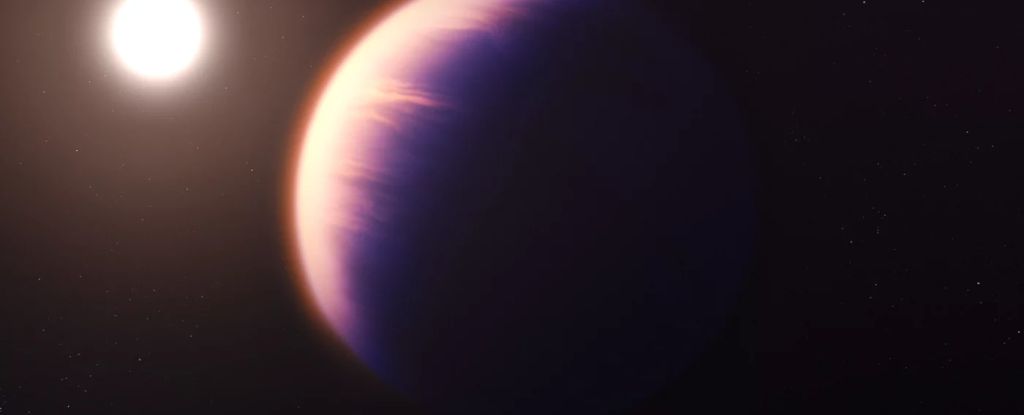
Nov 27, 2022
1 min, 1 sec
Earlier this year, WASP-39b was the subject of the first-ever detection of carbon dioxide in the atmosphere of a planet outside the Solar System.Now, an in-depth analysis of data from the James Webb Space Telescope (JWST) has given us an absolute goldmine of information: the most detailed look at an exoplanet atmosphere yet.The results include information about WASP-39b's clouds, the first-ever direct detection of photochemistry in an exoplanet atmosphere, and a nearly complete inventory of the atmosphere's chemical contents that reveals tantalizing hints of the exoplanet's formation history.
As starlight passes through the atmosphere of the transiting exoplanet, it changes.
The signal is faint, but with a powerful enough telescope, and a stack of transits, the changing absorption and emission features on the spectrum can be decoded to determine the contents of an exoplanet's atmosphere.With the first detailed exoplanet atmosphere analysis, it seems that the space telescope is going to live up to its promise.
We may not detect the signatures of life in an exoplanet atmosphere with JWST – perhaps an even more powerful telescope will be required to deliver that level of fine detail – but with the analysis of WASP-39b, that discovery is feeling ever more tantalizingly within grasp.